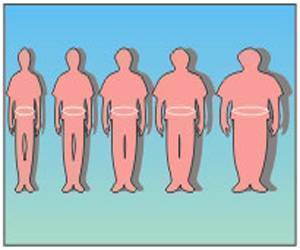
According to Princeton University researchers, facial expressions can be ambiguous and subjective when viewed independently.
The researchers asked study participants to determine from photographs if people were experiencing feelings such as loss, victory or pain from facial expressions or body language alone, or from both.
In some cases, a facial expression associated with one emotion was paired with a body experiencing the opposite emotion.
In four separate experiments, participants more accurately guessed the pictured emotion based on body language - alone or combined with facial expressions - than on facial context alone.
Senior researcher and Princeton Professor of Psychology Alexander Todorov said that these results challenge the clinical - and conventional - presumption that the face best communicates feeling.
Advertisement
"We find that extremely positive and extremely negative emotions are maximally indistinctive," Todorov, who worked with first author Hillel Aviezer, a psychology professor at Hebrew University of Jerusalem who conducted the work as a postdoctoral researcher under Todorov, and Yaacov Trope, a psychology professor at New York University, said.
Advertisement
"Subjectively people think they can tell the difference, but objectively they are totally at [random] chance of determining correctly. The message of this research is that there is a lot of information in body language people aren't necessarily aware of," Todorov said.
The paper counters popular theories holding that facial expressions are universally consistent indicators of emotion. The most prominent, Todorov said, have been developed by psychologist and University of California-San Francisco professor emeritus Paul Ekman, whose work was fictionalized in the television series 'Lie to Me'.
Instead, facial movements may be "much blurrier" than those theories account for, Todorov said.
In particular, he and his colleagues suggest that when emotions reach a certain intensity, the intricacies of facial expressions become lost, similar to "increasing the volume on stereo speakers to the point that it becomes completely distorted," he said.
Jamin Halberstadt, a psychology professor at the University of Otago in New Zealand, said that the work demonstrates in a new way that the physical cues of emotion are more varied and dependent on the emotion felt than predominating theories suggest. Halberstadt is familiar with the Princeton research but had no role it.
The Princeton research introduces an additional element to interpreting emotions that scientists "have to account for," Halberstadt said.
In particular, interrogation and security-screening techniques - such as the U.S. Transportation Security Administration's Screening of Passengers by Observation Techniques (SPOT) program - have been developed based on facial expression research.
The work by Todorov and his colleagues, however, suggests that a crucial bodily element may have been overlooked.
For their study, the Princeton researchers used stock photos of people at six emotional "peaks" - pain, pleasure, victory, defeat, grief and joy. In the first experiment, three groups of 15 people were shown only the facial expression, the body position or the face and body together, respectively.
Participants who saw the face only had a 50-50 chance of being correct, whereas those who only saw a body or the face and body together were far more accurate.
Yet, these respondents also exhibited a high degree of illusory facial affect: 53 percent of people who saw the body-and-face photos said they relied on the face.
Of a group for whom the pictures were described but not shown, 80 percent said they would rely solely on the face when determining the emotion pictured, while 20 percent they would look to the face and the body together. No one indicated they would judge by body language alone.
In the second experiment, photos were manipulated so that faces from one emotional peak such as victory were spliced onto a body from an opposing peak such as defeat. In those cases, participants more often determined the emotion to be that associated with the body.
For the third experiment, participants rated a variety of faces that fell with in the six emotional categories with ambiguous results. In fact, the authors report, respondents interpreted the positive faces as negative more than they did the negative faces.
Those faces were then randomly put upon bodies in a situation of victory or pain, and victory or defeat. Again, study participants typically guessed the situation in accordance with what they gleaned from the body rather than the face.
The final experiment asked participants to mimic the facial expressions in the photos for victory and defeat. Those images were put onto corresponding or opposing body images of victory or defeat.
A separate group of people then had to determine the feeling being shown in each image. As in the previous experiments, the body language more often influenced respondents, who labelled a feeling negative when a winning face was on a body of defeat, and vice versa.
If anything, Todorov said, the findings promote a more holistic view of understanding how people physically communicate feelings.
The study has been published in the journal Science.
Source-ANI










